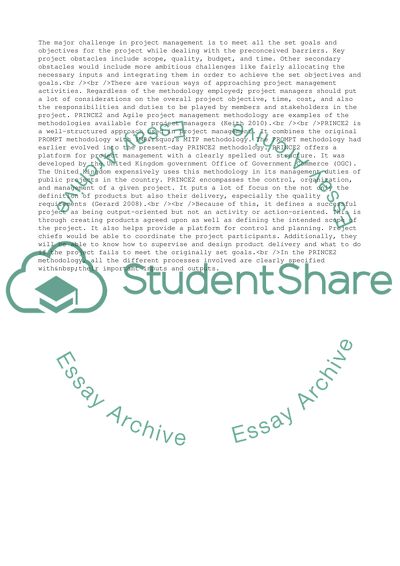Cite this document
(Project Management of PRINCE2 and Agile Essay Example | Topics and Well Written Essays - 1750 words - 15, n.d.)
Project Management of PRINCE2 and Agile Essay Example | Topics and Well Written Essays - 1750 words - 15. https://studentshare.org/management/1625339-project-management
Project Management of PRINCE2 and Agile Essay Example | Topics and Well Written Essays - 1750 words - 15. https://studentshare.org/management/1625339-project-management
(Project Management of PRINCE2 and Agile Essay Example | Topics and Well Written Essays - 1750 Words - 15)
Project Management of PRINCE2 and Agile Essay Example | Topics and Well Written Essays - 1750 Words - 15. https://studentshare.org/management/1625339-project-management.
Project Management of PRINCE2 and Agile Essay Example | Topics and Well Written Essays - 1750 Words - 15. https://studentshare.org/management/1625339-project-management.
“Project Management of PRINCE2 and Agile Essay Example | Topics and Well Written Essays - 1750 Words - 15”. https://studentshare.org/management/1625339-project-management.


